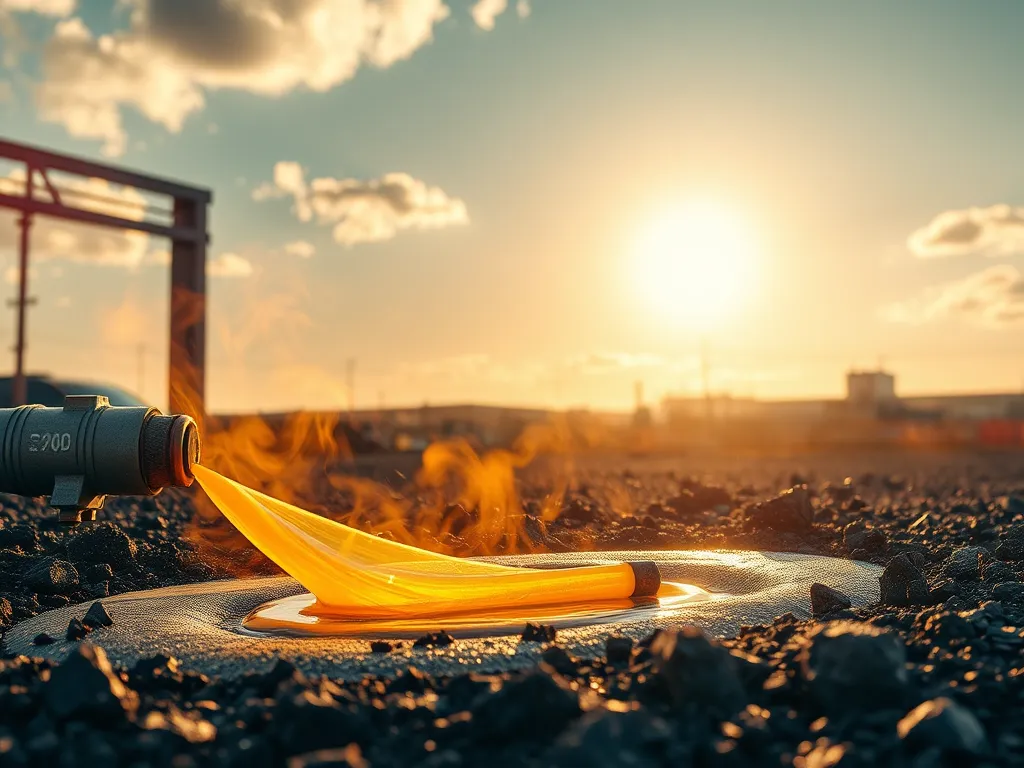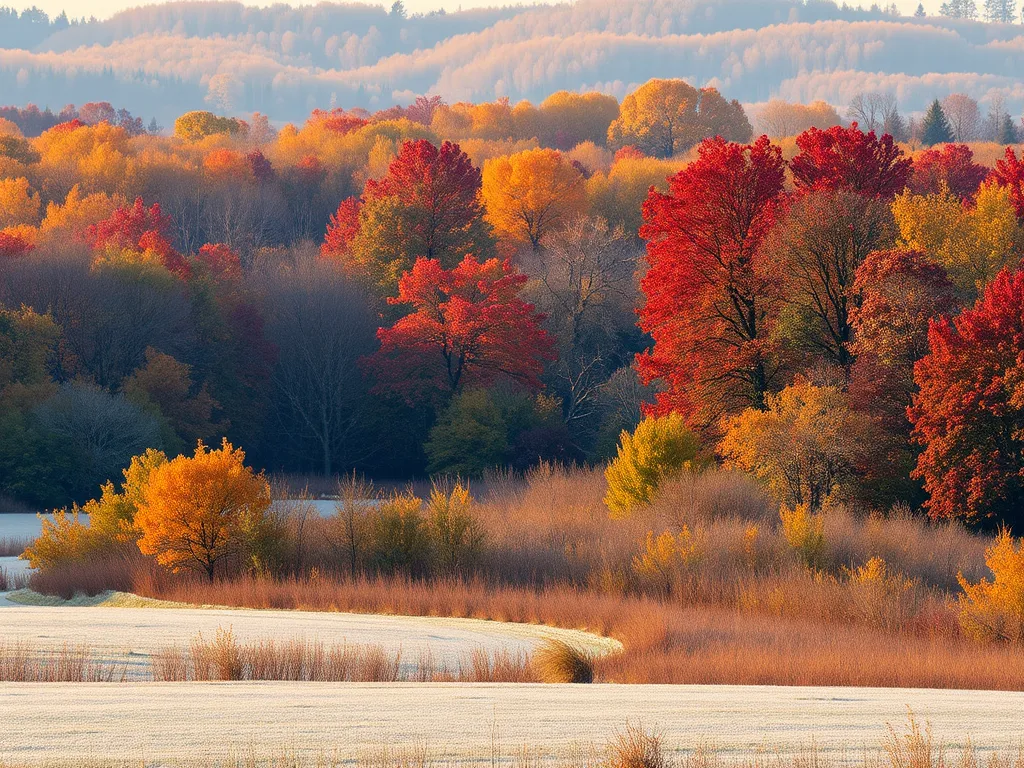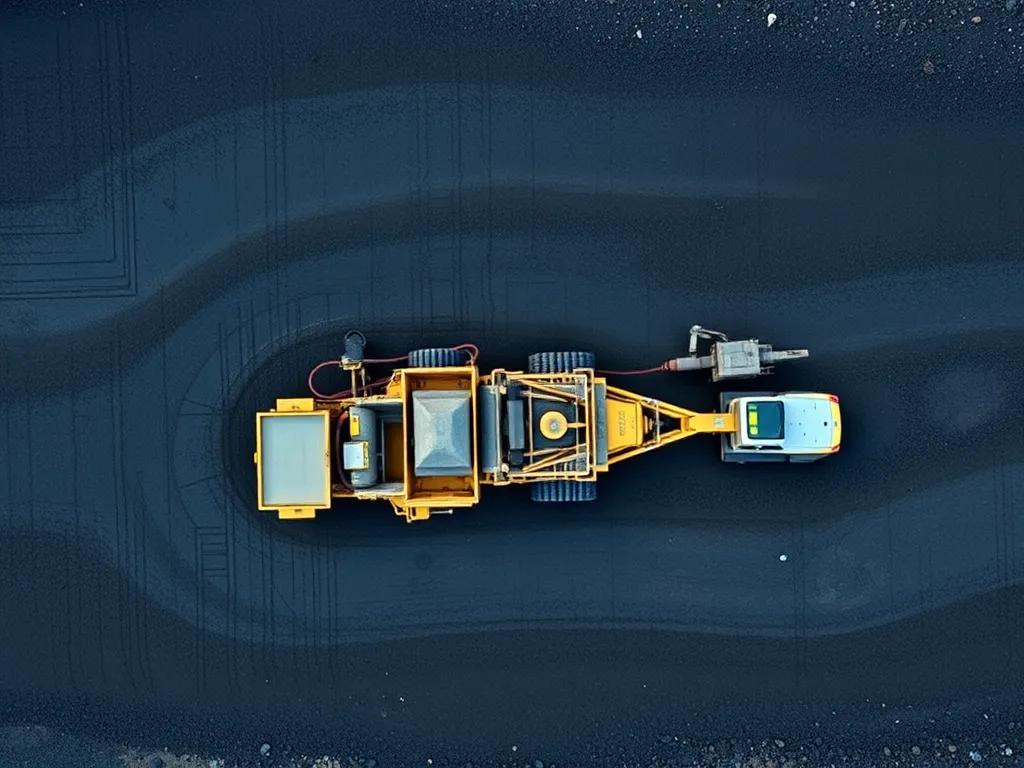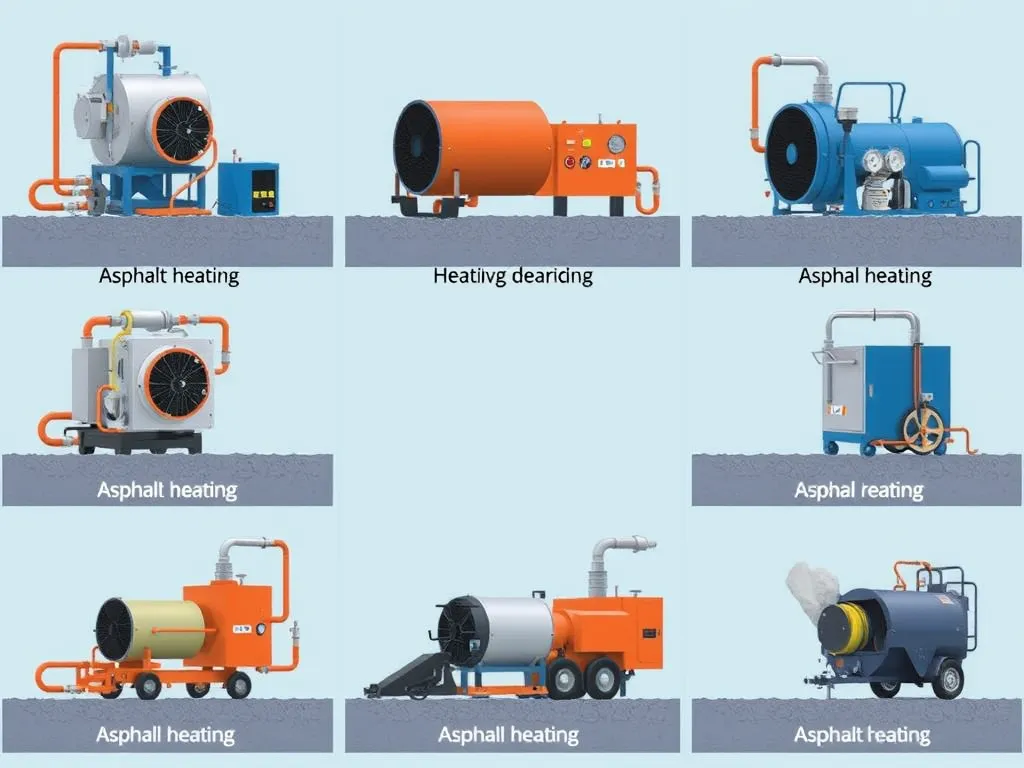Best Time Of Year to Pave Asphalt: Seasonal Guide &Amp; Temperature Factors
Published on: September 16, 2025 | Last Updated: April 14, 2025
Written By: George Voss
The best time to pave asphalt is summer and early fall when temperatures stay above 50°F. Warm weather keeps the asphalt mix workable for proper compaction – the process of compressing materials into a dense surface. Cooler regions may extend paving into early fall, but northern areas like New England face shorter windows due to faster temperature drops. Avoid paving during rain, freezing conditions, or when ground temperatures dip below 50°F.
This guide explores how seasons and weather impact asphalt quality. Learn ideal temperature ranges for installation, seasonal pros and cons (summer heat vs. fall flexibility), and regional climate considerations. We’ll break down curing timelines, cost differences between peak and off-season work, and environmental factors like using recycled asphalt pavement (RAP). Plan your project around frost dates, local rainfall patterns, and contractor availability for optimal results.
Contents
- Introduction to Asphalt Paving Timing
- Ideal Temperature Ranges for Asphalt Installation
- Seasonal Breakdown for Asphalt Paving
- Critical Weather Conditions to Avoid
- Curing and Drying Needs
- Cost Considerations by Season
- Environmental Factors in Asphalt Installation
- FAQ: Asphalt Paving Timing
- Closing Thoughts
- Useful References for You:
Introduction to Asphalt Paving Timing
Proper timing determines asphalt pavement quality and longevity. Temperature directly affects the asphalt binder’s viscosity during application. Hot mix asphalt (HMA) requires specific thermal conditions for compaction and curing. Ambient air temperature, ground temperature, and weather patterns all play roles in achieving optimal density.
Seasonal changes create varying challenges. Summer offers consistent heat but risks extreme temperatures. Fall provides cooler yet workable conditions in many regions. Spring brings rain and thaw cycles that destabilize subgrades. Winter paving remains limited due to freezing risks.
Ground preparation also ties to seasonal timing. Subbase materials must be dry and stable for proper load-bearing capacity. Moisture trapped beneath fresh asphalt leads to cracks and structural failures over time. PG binders (performance-graded asphalt cement) require specific temperature ranges to activate bonding properties effectively.
Project managers balance these elements when scheduling jobs. Contractors often book months ahead during peak seasons, affecting availability and costs. Thermal contraction during cooling phases and aggregate settling rates further emphasize the need for precise timing.
Next, we’ll break down the exact temperature thresholds that dictate successful asphalt installation.
Ideal Temperature Ranges for Asphalt Installation
Heat plays a key role in asphalt work. The right temps help the mix stay workable and bond well. Wrong temps lead to cracks or weak spots.
Optimal Temperature for Laying Asphalt
Plan paving when air temps hit 70-85°F. Road crews call this the “sweet spot” for PG binders like PG 64-22. Warmth keeps asphalt fluid for smooth rolling. Hot mix cools at 2-3°F per minute in these conditions.
Minimum Temperature Thresholds for Proper Application
Never pave below 50°F ground temp. Cold makes asphalt stiffen fast – crews get just 8-10 minutes to roll it thin. Northern states use warm-mix tech with wax to push limits to 40°F. Frost under slabs? Wait for thaw.
Impact Of High Heat on Fresh Asphalt
90°F+ days cause trouble. Over-hot mix bleeds binder, leaving ruts from car tires. Pros fight this with shaded loads and night work. Surface temps can spike 25°F above air temp in sun – test with IR guns before rolling.
While temp rules matter, seasons bring other hurdles. Next we’ll break down how spring rains and fall frost change the game.

Seasonal Breakdown for Asphalt Paving
Weather shifts change how crews lay asphalt. Each season brings unique pros and cons for road work.
Summer: Peak Season Advantages
July and August see 85% of U.S. paving jobs. Warm days boost mix workability.
Consistent Heat for Compaction
Mix stays above 275°F longer in summer heat. Rollers press stones tight into hot liquid binder (asphalt cement). Proper compaction cuts future cracks by 40%.
Rain Management Strategies
Sudden storms delay 1 in 5 summer jobs. Pros use infrared heaters to dry wet spots fast. Some add polymers to repel water in mix designs.
Fall: Secondary Paving Window
September temps between 50-70°F work if crews beat frost. Northern states race to pave before October 15 cutoff.
Temperature Decline Considerations
Night dips below 40°F risk “cold joints” where new layers won’t bond. Contractors add warm-mix tech (WMA) to keep mat above 220°F longer.
Northeast Region Challenges
New England’s early frosts force shorter fall paving. Maine crews often switch to patching by mid-October as ground freezes.
Winter: Limited Viability Periods
Only 12 states allow winter paving. Success needs temps above 45°F and zero ice in stone base.
Cold Weather Risks
Mix cools 25% faster in winter air. Cold-laid asphalt loses 60% strength if temps drop below 32°F before curing.
Snow and Frost Complications
Frozen ground stops proper compaction. Snowmelt seeps into fresh pavement, causing potholes when it refreezes.
Spring: High-risk Installation Period
March and April cause 70% of failed asphalt jobs. Wet ground and temp swings ruin fresh pavement.
Ground Thaw Concerns
Frost depth maps show when soil stabilizes. Crews check with thaw probes – base must be above 32°F for 5 straight days.
Excessive Rainfall Impacts
Spring rains wash binder off stones. Wet mixes need 50% longer dry times. Many states ban paving if rain chance tops 30%.
While season guides help, weather plays a key role in asphalt success. Next, we’ll break down specific risks from rain, ice, and humidity.
Also See: Asphalt Management Challenges: Overcoming Key Issues
Critical Weather Conditions to Avoid
Bad weather ruins fresh asphalt. Three key threats demand attention.
Rain During Installation
Rain cools asphalt too fast. Water seeps into the mix, weakening bonds. Even light rain (0.1″+) causes cracks or soft spots. Work stops if rain hits within 24 hours.
| Rain Type | Effect |
|---|---|
| Light (0.1″-0.25″) | Surface flaws |
| Heavy (>0.25″) | Full-depth damage |
Freezing Temperatures
Cold air stops asphalt from setting right. Below 50°F, binders harden before proper packing. Frost heave creates bumps. Night temps under 32°F ruin fresh jobs.
| Asphalt Type | Min Temp |
|---|---|
| Hot Mix | 50°F |
| Warm Mix | 40°F |
High Humidity Challenges
Moist air slows drying. Over 70% humidity traps water in the mix. Weak surfaces form, cutting lifespan by 3-5 years. Fog or mist acts like rain during pours.
| Humidity Level | Cure Time Increase |
|---|---|
| 70-80% | 2x longer |
| 80%+ | 3x longer |
Beating bad weather sets up success. Next, learn how curing locks in strength.

Curing and Drying Needs
Fresh asphalt needs time to set right. The mix must cool slow to lock stones in place. This step makes roads last through heat, cold, and heavy loads.
Best Heat for Curing
Asphalt cures best at 70-85°F. These temps help the binder stick to rocks in the mix. Below 50°F? The top may harden too fast, leaving weak spots. This is why late spring to early fall marks the best time for asphalt work in most zones.
Driveway Rules After Paving
New blacktop stays soft for hours. Even foot prints can dent it. Wait 24 hours before walking. Let full cure happen before heavy use.
Weight Limits
Keep cars off for 3-5 days. Trucks or RVs? Wait 7 days. Cold or wet weather adds wait time. Plan paving when dry days let you hit these marks.
Curing Times
Top firms say 6-12 months for full cure. But light use starts in 1-2 days. Hot summer days speed this up. Fall paving? Cool air means longer waits. Time your project right to use your drive when needed.
How long your asphalt lasts ties to these steps. Next, see how season choice shapes your costs.
Cost Considerations by Season
Paving costs shift with weather and demand. Smart timing cuts bills while keeping quality high.
Summer Demand Pricing
Summer brings peak paving rates. Contractors hike fees 15-25% from June-August. High heat aids fast work but boosts demand. Hot-mix plants run full tilt, charging $120-$180 per ton versus $100-$150 in cooler months.
| Summer Factor | Cost Impact |
|---|---|
| Labor shortages | +$3-$5/sq yd |
| PG 64-22 binder costs | +12% vs spring |
| Weekend work | +20% surcharge |
Off-season Discount Opportunities
Fall and spring deals slash costs. Crews offer 10-20% discounts to fill schedules. Late October paving in Texas runs $2.80/sq ft vs summer’s $3.50. Risk exists: sudden cold or rain may delay jobs.
| Season | Avg Savings | Weather Risk |
|---|---|---|
| Fall (Sep-Oct) | 18% | Early frost |
| Spring (Apr-May) | 15% | Wet soil |
Cold-climate tip: Midwest crews cut rates 8% in September but stop work once ground temps hit 50°F. Balance savings against forecast.
Smart planners mix season deals with green options. Next: how eco-choices affect paving timelines and budgets.

Environmental Factors in Asphalt Installation
Paving schedules intersect with environmental impacts through material performance and emission control. Seasonal temperature shifts directly influence both factors, making timing decisions vital for sustainable outcomes.
Emission Considerations
Hot-mix asphalt production releases volatile organic compounds (VOCs) and greenhouse gases. During summer’s peak paving months, plants operating at 300°F-350°F generate 20-30% higher emissions versus cooler seasons. Cooler fall temps below 50°F require longer burn times, increasing fuel use by 15% per ton.
- Warm-mix additives cut production temps by 50°F, lowering emissions during spring/fall projects
- Night paving in summer reduces ground-level ozone formation
Recycled Material Performance
Reclaimed asphalt pavement (RAP) performs best when installed in temps above 60°F. Cold weather causes recycled binders to stiffen, creating uneven compaction. Summer’s heat keeps RAP pliable, letting crews blend up to 30% recycled content without compromising density.
- RAP mixes require 10°F-15°F higher layering temps versus virgin material
- Fall installations with RAP need polymer-modified PG 64-28 binders for proper curing
Proper timing balances eco-friendly practices with durable results. Let’s examine common questions about temperature thresholds and seasonal strategies.
FAQ: Asphalt Paving Timing
What is the Best Temperature to Cure Asphalt?
The ideal temperature for curing asphalt is between 70°F and 85°F. These temperatures help ensure that the binder adheres well to the aggregate in the asphalt mix. Curing at temperatures below 50°F can lead to weak spots and inadequate bonding.
When Should I Pave My Driveway in Cold Climates?
In cold climates, the best time to pave your driveway is typically late spring to early fall, when temperatures are consistently above 50°F. If using warm-mix asphalt (WMA), paving may be feasible down to 40°F, but it is crucial to wait for the ground to thaw completely if there is frost.
How Long Before Using New Asphalt Surfaces?
It is generally recommended to wait 24 hours before walking on new asphalt. For vehicle traffic, you should restrict use for 3-5 days, allowing for complete curing before placing heavier vehicles like trucks or RVs on the surface, which may require up to 7 days.
What’s the Cheapest Season for Driveway Paving?
The cheapest seasons for driveway paving are typically spring and fall, when contractors may offer discounts of 10-20% to fill their schedules. Prices can vary based on local demand and weather conditions, so it’s wise to check with contractors for the best deals.
Best Time for Sealing Freshly Laid Asphalt?
The best time to seal freshly laid asphalt is typically around 6-12 months after installation, once the asphalt has fully cured. However, you can apply sealant earlier—within 30-90 days—if conditions allow, but be cautious not to seal too soon as it could hinder the curing process.
Closing Thoughts
Choosing the right time of year to pave asphalt can significantly impact the quality and longevity of your project. Understanding temperature ranges, seasonal advantages, and environmental conditions is key to achieving optimal results. Summer provides ideal heat and compaction, while fall can serve as a secondary option if temperatures remain favorable. Winter and spring present unique challenges that could compromise the integrity of the asphalt.
Careful planning around weather patterns, curing needs, and cost factors will help you make informed decisions. For reliable advice and calculations related to asphalt paving, be sure to check out Asphalt Calculator USA for comprehensive resources and insights.


